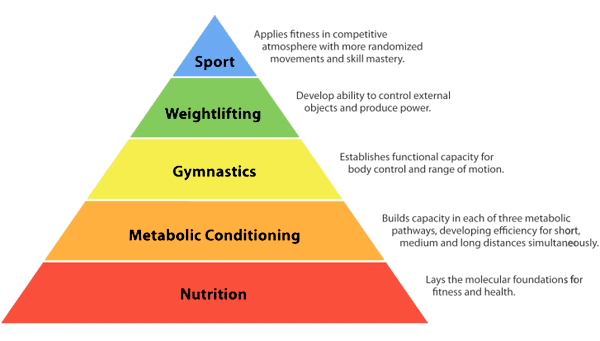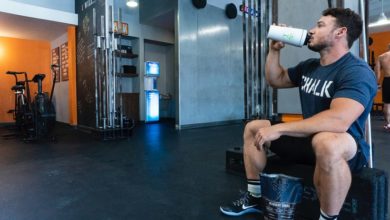
If you haven’t tried metabolic conditioning you’re missing out big time bro. It’s a heart-pumping, muscle-thumping, eyeball-popping workout that’ll leave you ripped, shredded and with the stamina of a pro athlete.
It’s the nuts when it comes to working out for lean gains.
Lifting weights is awesome. Not only is it alpha as f*ck to squat double body weight and bench the equivalent of a small family, it also leaves you looking as swole as you are shredded.
But every now and then you start to wonder if you should try something a bit different. Whether you should begin building fitness and conditioning or maybe change up your routine to kick start your love of the iron game.
That’s where metabolic conditioning comes in – a cruel and dark mistress that can either build you or break you. It commands respect like a crazy dominatrix in a bad mood. In fact, as workouts go, metcon is a sharp high heeled shoe to the balls… it’s painful, but also kinda nice.
Here’s what you need to know about it…
The Brodown: Article Preview
- What is metabolic conditioning?
- Energy systems and the science of conditioning
- The benefits of metcon workouts
- Sample workouts
What Is Metabolic Conditioning?
Metcon workouts focus on short periods of high-intensity exercise to give you the best results in the least amount of time. Check this though bro… they are brutal beyond belief.
Metabolic conditioning refers to conditioning exercises that are designed to improve fitness and body composition. They typically involve periods of high-intensity work followed by short recovery periods.
Workouts consist of short circuits that are repeated over and over in rounds.
As one the biggest trends in the fitness and athlete performance industries over the last few years, metabolic conditioning or metcon training is fast becoming the go-to for those wanting to get in shape fast.
The principles of metabolic conditioning

Metabolic conditioning is next up the ‘body composition pyramid’ in terms of importance for fat loss and performance.
In fact, it’s a fundamental aspect of training for any bro that wants to sit on the beach and watch the sun bounce off those shredded abs or hit a sub 40 minute 10k while holstering huge-ass pythons under his shirt.
There are hundreds of ways you can incorporate metabolic conditioning workouts into your program. However, all of them follow a few similar principles.
- Repeated periods, reps or rounds of very high work rate and intensity
- Recovery and rest intervals between each set
- A work to rest ratio that is pre-determined and designed to work your body as hard as possible
- An emphasis on intensity, productivity and all out bone-crushing workload
Chances are you’ve tried metabolic conditioning in the past and not even realized. If you’ve ever tried a high-intensity interval workout or a circuit class you’ll have tried a form of metcon.
But it probably wasn’t as tough as the workouts we’ve got in store for you.
Metabolic Conditioning Science – What’s Happening Under the Hood?
Your body is a clever piece of machinery. Yep, even yours.
When you work out, your body uses its autonomic control mechanisms to help you cope with the demands of the session. If the workout is light and easy it reacts in one way… and if the workouts are monster balls-to-the-wall a**holes, it reacts another way.
Energy systems and metabolic conditioning
We’ve written previously about how your body produces energy during exercise in Recover Faster, Perform Better. In this article we highlighted the different ways your body can provide energy during exercise.
If you haven’t read that detailed breakdown, here’s a summary…
In order for your body to use the energy from the food you just ate (protein shake and banana no doubt bro?), it has to break it down and then convert it into ATP.
Because you only store a small amount of ATP your cells are constantly making more and more of it.
It’s a bit like a cell phone battery – every time you use your cell you have to charge it up or you can’t log into tinder and hook up with some chick. Your body works the same way.
ATP is recharged one of to ways:
- Aerobically – Oxygen is used to convert food energy into ATP. It’s a fairly slow process but generates lots of ATP molecules.
- Anaerobically – ATP is made without oxygen. This means it can make ATP fast but doesn’t make as much as it can do in the presence of oxygen.
Aerobic energy production might yield a f*ck-tonne of ATP, but the process is slow. Like a teenager with attitude, shuffling along hating the world. It’s laboring and frustratingly sluggish.
Anaerobic energy production on the other hand is more like a live wire on pre workout. It’ll give you energy as fast as you could possibly need it… but burns out quickly. That’s why working out hard leaves you tired and out of breath within minutes.
Whether your body takes the slow, scenic route of aerobic energy production or the anaerobic express line is down to how fast your body needs that ATP.

Metabolic conditioning relies on anaerobic energy production
If you stand up and walk around it’s your aerobic system that’s master. Same if you break into a light jog. But once the intensity reaches a certain point your aerobic system gives it the “nah fam” and passes the workload over to your anaerobic system.
When you work out at high intensity, you burn energy like crazy. That guy’s in charge now.
Your cells have no option but to make ATP primarily anaerobically; with your aerobic energy system trying to keep up in the background.
During metabolic conditioning, the primary energy system used is anaerobic glycolysis
Most people know anaerobic glycolysis as the ‘lactic acid energy system’.
It’s the one that gives you fast energy to help you power through short periods of high-intensity… but you soon run out of steam as ATP production slows down very quickly.
And it’s targeting this energy system that leads to the hundreds of benefits that metabolic conditioning provides…

What Are The Benefits of Metabolic Conditioning Workouts?
Take part in a solid metcon workout and you’ll soon realize this is no walk in the park bro. If you haven’t got at least a base of conditioning you’ll be left in a heap on the floor, dazed, light-headed and with a face paler than one of Anne Hathaway’s ass cheeks.
Here’s why you should take up metabolic conditioning:
- Improved cardio fitness. Metcon is great for improving endurance and sport specific stamina.
- Increased calorie turnover. This leads to high rates of fat burning (presuming calories are controlled with diet).
- Increased basal metabolic rate. A benefit that can lead to longer periods of fat burning.
- Builds muscle and strength. Go for a total body metcon strength workout to make gains.
- Elevates natural growth hormone levels. It can also boost the primary male androgen, testosterone.
- Time-efficient. Which suits busy guys with other things to do.
- Builds resilience. You’ll might be staring into a endlessly dark pit of despair during metcons… and that’s good for improving self-worth and making you less of a bitch if you manage to get out alive.
Use metabolic conditioning to improve body composition – burn fat, build jacked muscle
Metcons burn through fat like your girl burns through your credit cards
Targeting anaerobic energy production is great for building all-round optimal body composition.
And the effect on your metabolism is significant, with the high afterburn effect meaning you burn more calories throughout the next 24 hours.
Add all this up and you’re looking at a physique that’s dick-skin shredded in no time.
Use metabolic conditioning to get freakish huge
The lactic acid produced during anaerobic glycolysis has been shown to trigger the natural release of growth hormone. As a potent regulator of body composition, GH helps break down fat for energy and divert incoming calories into muscle tissue.
The result is pure lean gains bro.
Metabolic conditioning workouts that include strength training will ramp up testosterone levels – the main hormone responsible building muscle mass and increasing strength and power.
All men need to optimize testosterone production as a natural decline through lack of activity, obesity and aging (you lose 1-2% testosterone each year after 30 years of age) occurs in practically every dude.
Metcon is a powerful way of fighting back – especially when combined with a good diet and natural testosterone-boosting supplement.
Check out our article on secrets to boost testosterone levels naturally and fast to find out more here.
Sample Metabolic Conditioning Workout
Now we’ve got your interest it’s time to get your attention. Here are a couple of sample metcon workouts guaranteed to get you down to single digit body fat while rockin’ 18 inch guns.
Body weight conditioning workout
| Exercise | Reps / Time | Rest period | Sets |
|---|---|---|---|
| Box jumps | 10 reps (or) 60 seconds | 45 seconds | 3 |
| Mountain climbers | 10 each side (60 seconds) | 45 seconds | 3 |
| Hand elevated push ups | 10 reps (or) 60 seconds | 45 seconds | 3 |
| Jumping lunges | 10 each side (60 seconds) | 45 seconds | 3 |
In this simple body weight metcon the emphasis is on using your own mass as resistance. You’ll complete either 10 reps or 60 seconds of continuous reps, rest for 45 seconds and complete a total of 3 sets before moving onto the next exercise.
Metabolic EMOM conditioning
| Exercise | Reps / Time | Rest period | Sets |
|---|---|---|---|
| Bench press | 10 | Rest for remainder of 60 seconds | 1 |
| Back squat | 10 | Rest for remainder of 60 seconds | 1 |
| Push press | 10 | Rest for remainder of 60 seconds | 1 |
| Front squat | 10 | Rest for remainder of 60 seconds | 1 |
EMOM stands for ‘every minute, on the minute’. You start a timer for 60 seconds and blast through 10 reps of exercise one. Once finished, the remaining time is used for recovery. Once that 60 seconds has passed you move onto exercise number two and start the 60 second timer again. Complete between 2-3 rounds in total.
Strength training AMRAP metcon blast
| Exercise | Reps / Time | Rest period | Sets |
|---|---|---|---|
| Barbell thrusters | 60 seconds | N/A | 1 |
| Pullups | 60 seconds | N/A | 1 |
| Walking lunges | 60 seconds | N/A | 1 |
| Medicine ball wall balls | 60 seconds | N/A | 1 |
‘As many reps as possible’ is a time-based protocol that sees you completing as many full reps as you can in 60 seconds. Once you’ve done, move WITHOUT REST onto the next exercise for 60 seconds. You’re essentially completing 4 minutes of work with no break. Once you’ve completed the full round, recover for 2-3 minutes and complete another full round. Aim for 3-4 rounds in total.





